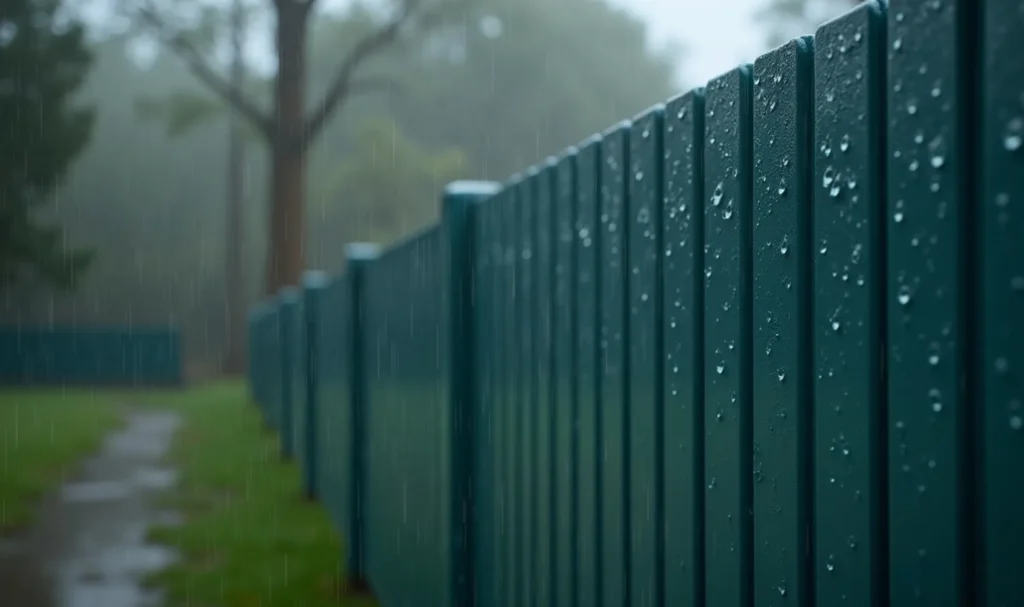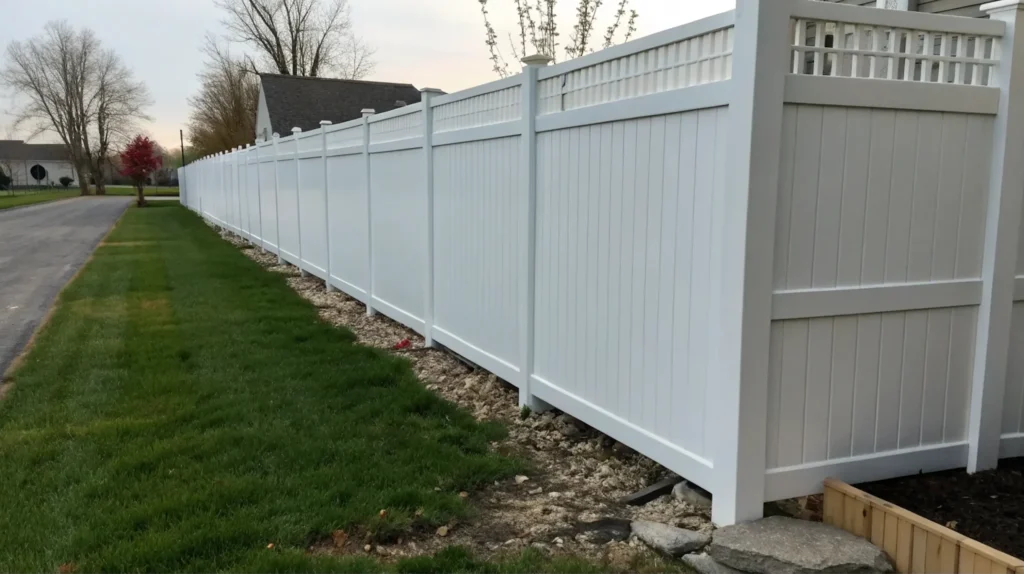Introduction: Can Cats Climb Vinyl Fences?
Cats are known for their agility, curiosity, and ability to scale fences, trees, and other structures with ease. If you’re a cat owner, you might wonder whether your cat can climb a vinyl fence and how to prevent potential escapes. Vinyl fences are a popular choice for homeowners due to their durability, low maintenance, and aesthetic appeal, but are they truly secure for keeping cats safely inside the yard? In this article, we will explore the characteristics of vinyl fences, how they affect a cat’s ability to climb, and offer some solutions to prevent escapes.
How Vinyl Fences Affect Cats’ Climbing Abilities
1. Height and Structure of Vinyl Fences
One of the main factors that influence whether a cat can climb a fence is the height of the fence. In general, taller fences (at least 6 feet) are more difficult for cats to climb over, especially if they don’t have a solid or textured surface to grip onto.
- Shorter vinyl fences (under 4 feet) are more likely to be scaled by a cat, particularly if your cat is determined and agile.
- Higher vinyl fences with smooth surfaces will be harder for cats to climb. A 6-foot tall vinyl fence is typically enough to prevent most cats from escaping, but there are exceptions, especially with highly athletic or curious breeds.
2. Smoothness of the Fence
A key characteristic of many vinyl fences is their smooth, non-grip surface. Unlike wooden fences or chain-link fences that have slats or gaps for a cat to grip and climb, vinyl fences tend to be smooth, making them more challenging for cats to scale.
- Solid vinyl fences with a smooth surface generally prevent climbing, as cats have little to hold onto.
- Textured vinyl fences or vinyl fences with protruding elements might offer some grip for cats to scale. These could be decorative post caps or grooves, and while these elements may not necessarily allow cats to climb easily, they could still provide opportunities for escape.
Types of Vinyl Fences and Their Impact on Cat Climbing
1. Solid Vinyl Fences
Solid vinyl fences are made from one continuous sheet of material, without gaps. These fences are the best option for preventing a cat from escaping, as they eliminate the possibility of the cat slipping through spaces.
- Key Benefits:
- No gaps to squeeze through.
- Offers full privacy and security.
- Can withstand high winds and harsh weather conditions.
- Cat-Specific Considerations: The solid surface makes it difficult for cats to climb, as there’s nothing to grab or climb on. This makes it an ideal solution for cat owners looking to keep their pets safe within the yard.
2. Vinyl Picket Fences
While picket vinyl fences are visually appealing, they do come with gaps between the vertical posts. These fences are less secure for cats, as they can potentially squeeze through the spaces between the slats.
- Key Benefits:
- Aesthetic charm with a classic look.
- Lightweight and easy to install.
- Cat-Specific Considerations: If your cat is small or agile, they might be able to slip through the gaps or even climb the fence. To prevent this, you can install shorter pickets or use a closer spacing design to limit access points.
3. Vinyl Privacy Fences
Privacy vinyl fences are similar to solid vinyl fences but are often used for more secluded yards where privacy is a priority. These fences are typically 6 feet tall and feature vertical slats with little or no space between them.
- Key Benefits:
- Offers complete privacy for the yard.
- Helps reduce distractions that might make cats anxious.
- Cat-Specific Considerations: Privacy vinyl fences are one of the best options for keeping cats safely inside, as the lack of gaps and smooth surface makes it harder for them to climb or squeeze through.
4. Vinyl Mesh Fences
Vinyl mesh fences are another option for cat owners, especially those with smaller or more agile pets. The mesh design is typically used to keep smaller animals in, but it’s not as secure as solid vinyl fences when it comes to climbing.
- Key Benefits:
- Provides a lightweight and flexible option.
- Easier to install and can be used for temporary enclosures.
- Cat-Specific Considerations: Mesh fences are more climbable because the gaps between the mesh strands can allow cats to gain a foothold. For small cats, especially breeds with high energy levels, this type of fence may not be effective in keeping them contained.
How to Prevent Cats from Climbing or Escaping Vinyl Fences
1. Install a Cat-Proof Barrier
If your cat is a skilled climber, you may want to install a cat-proof barrier at the top of your vinyl fence. Some options include:
- Fence toppers: These are curved or angled additions to the top of the fence that make it harder for cats to climb over. The angle of the topper prevents cats from getting a solid foothold.
- Cat-Proofing Kits: These kits are designed specifically to attach to the top of fences and prevent cats from scaling them.
2. Increase the Height of Your Fence
For cats that are particularly agile, consider increasing the height of your vinyl fence. A 6-foot fence may not be enough for some cats, especially those with strong climbing instincts. Raising the fence to 8 feet or higher can help prevent escapes, though this may depend on your local regulations regarding fence heights.
3. Ensure the Fence is Solid and Secure
To enhance the security of your fence, ensure that the vinyl is continuous and free from gaps. Solid vinyl fences are the most effective at keeping cats contained. Make sure there are no openings between posts or any sections of the fence that could be weakened by wear or poor installation.
4. Create a Safe, Stimulating Environment Inside the Yard
If your cat is trying to escape out of boredom or curiosity, consider creating a more engaging environment within your yard. Add climbing structures, cat trees, or outdoor enclosures that provide plenty of enrichment without the need to escape.
Common Questions About Cats and Vinyl Fences
Q1: Can my cat climb a vinyl fence?
While it’s possible for some cats to climb a vinyl fence, the smooth surface and height of the fence make it more difficult for most cats. Solid vinyl fences or privacy vinyl fences are the best options for keeping cats safely inside.
Q2: What is the best type of vinyl fence for keeping cats inside?
The solid vinyl fence or privacy vinyl fence is the best option for preventing your cat from escaping. These fences offer no gaps, no grip points, and a smooth surface that deters climbing.
Q3: How can I stop my cat from escaping over a vinyl fence?
You can prevent your cat from climbing a vinyl fence by installing a cat-proof barrier at the top, increasing the fence height, or ensuring that the fence is solid and free from gaps. Additionally, consider providing enrichment inside your yard to reduce the temptation to escape.
Q4: Are there vinyl fences that prevent climbing altogether?
Yes, solid vinyl fences with a smooth, continuous surface are the most effective at preventing climbing. Ensure that your fence is tall enough and doesn’t have gaps where your cat can slip through.
Conclusion: Keep Your Cat Safe with the Right Vinyl Fence
In conclusion, vinyl fences can be an excellent choice for keeping cats safely contained within your yard, as long as the fence is appropriately chosen and maintained. Solid vinyl and privacy fences are the best options for preventing escapes, while additional measures such as cat-proofing barriers can further enhance security. By choosing the right fence and taking steps to deter climbing, you can provide a safe and secure outdoor environment for your furry friends.



